Russia Launches 17 More Iranian Drones At Targets In Ukraine
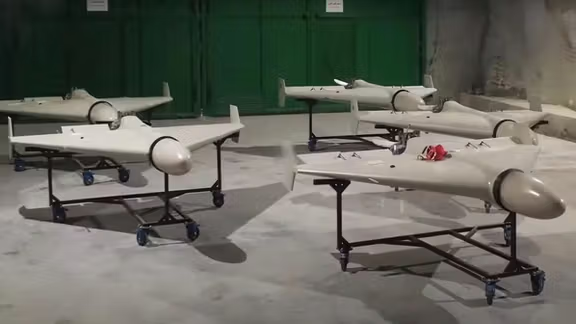
Ukrainian forces destroyed 14 out of 17 Iranian-made Shahed drones Russia launched, Ukraine's military said on Tuesday, with 13 drones destroyed over the Odesa region in the southwest.

Ukrainian forces destroyed 14 out of 17 Iranian-made Shahed drones Russia launched, Ukraine's military said on Tuesday, with 13 drones destroyed over the Odesa region in the southwest.
"In total, up to 17 launches of UAV (unmanned aerial vehicle) attacks were recorded, presumably from the eastern coast area of the Sea of Azov," the command said in a statement on the Telegram messaging app.
This was the first attack by Iranian-made drones in almost two weeks. Russian long-range missile stockpiles have dwindled after repeated attacks on civilian targets since October when Moscow also began using hundreds of Shahed suicide drones.
Iran first denied it had supplied drones to Russia but in early November foreign minister Hossein Amir-Abdollahian admitted the deliveries, but claimed they were sent before the Russian invasion.
There have been intelligence reports that Tehran might be planning to also supply long-range missiles to Russia.
Ukraine's South military command said one drone hit an enterprise in the Odesa region, causing a fire, which was eliminated by the morning.
"According to preliminary information, there were no human losses," the command said in a statement.
The United States and its NATO allies have strongly condemned Iran’s drone deliveries to Russia. Washington, which has stopped nuclear talks with Tehran, has indicated that it expects the deliveries to stop before any further negotiations take place.
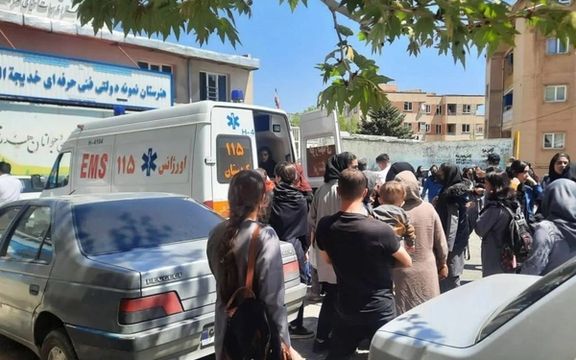
Amnesty International has called for an “independent, thorough and effective” investigation into the poisoning of schoolgirls across Iran.
In a letter to Iran’s Prosecutor General Mohammad Javad Montazeri on Tuesday, the human rights group said the authorities must ensure girls have equal and safe access to education and are protected from any form of violence.
Amnesty warned that the rights to education, health and life of millions of schoolgirls are at risk amid ongoing chemical gas attacks deliberately targeting girls’ schools in Iran.
According to the letter, more than 100 schools have been targeted since November, some more than once.
Amnesty says the poisonings appear to be a coordinated campaign to punish schoolgirls for their peaceful participation in nationwide protests that erupted in mid-September 2022, including through acts of resistance such as removing their mandatory hijabs and showing their hair in public while in school uniform.
Amnesty wrote: “An independent international delegation to investigate the attacks, including UN Special Rapporteur on the situation of human rights in Iran, UN Special Rapporteur on the right to education, UN Special Rapporteur on violence against women and girls, UN Special Rapporteur on the right to health, and Committee on the Rights of the Child, must also be granted access to the country.”
The letter adds: “Many people in Iran suspect actors tied to the state or pro-government vigilantes, who have been empowered by Iran’s discriminatory and degrading laws and policies that perpetuate violence against women and girls, of being involved in the attacks, especially given the authorities’ failure to take meaningful action and their attempts to silence public criticism.
“The attacks were first reported in Qom province and have since spread to other provinces and become more frequent with multiple schools attacked daily. These attacks have left schoolgirls hospitalized with symptoms including coughing, difficulty in breathing, nose and throat irritation, heart palpitation, headache, nausea, vomiting and numbness in limbs.”

Amnesty also noted that the authorities have tried to silence public calls for accountability by subjecting distressed parents, schoolgirls, teachers, journalists and others to violence, intimidation and arrest for peacefully protesting or reporting on the authorities’ failure to stop the poisonings.
Meanwhile, the deposed Sunni Imam of Azadshahr Mowlavi Hossein Gorgij on Monday wished for the death of those who poison children.
He said the world earlier witnessed such chemical attacks on children in Syria.
Chemical attacks on girl's schools in Iran continued on Tuesday with students in at least 26 elementary and high schools poisoned according to reports.
A large number of students were taken to hospital in the cities of Kermanshah, Urmia, Eslamshahr, Tehran, Karaj, Ardebil, Saqqez and Ahvaz.
Videos published on social media show families gathered in front of the schools to vent anger at the regime’s indifference to the attacks.
The serial poisoning of students has been ongoing for over four months. The perpetrators have not been identified, while the attacks have spread to more and more cities.
Amid an international outcry over the attacks, the UN Human Rights Council in Geneva has called for a transparent investigation, while the White House has demanded that those responsible are held accountable.
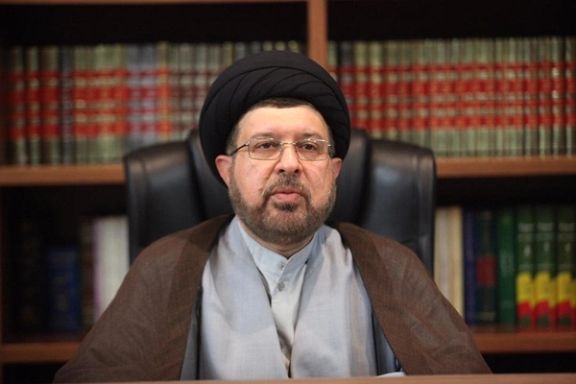
A suspect has been arrested over the horrific murder of two women in the city of Abadeh in Iran’s southern Fars Province, according to judicial officials.
The mutilated bodies of the victims were found in separate parts of the city.
Chief Justice of Fars Province, Kazem Mousavi announced on Tuesday that "the main suspect of the murders" was arrested on the evening of Monday, April 17.
The families of the victims told Iran International the judicial authorities have not provided the identity of the suspected murderer.
The murders come after the disappearance of local women in recent weeks.
A 55-year-old woman named Donya left home on Saturday morning for her office but did not return.
It is possible that one of the bodies is hers.
Relatives of the two feared victims told Iran International the bodies are so mutilated they cannot be identified initially. DNA tests are being conducted in the hope of providing identification.
Local residents believe there are more than two missing women, raising fears that there may be further victims, and fuelling growing anxiety among female residents of Abadeh.
The horrific practice of killing women and mutilating their bodies in Iran, known as “honor killing”, is a form of violence against women that is rooted in traditional gender roles and expectations. It is a way for men to control and punish women who are perceived to have violated social norms.
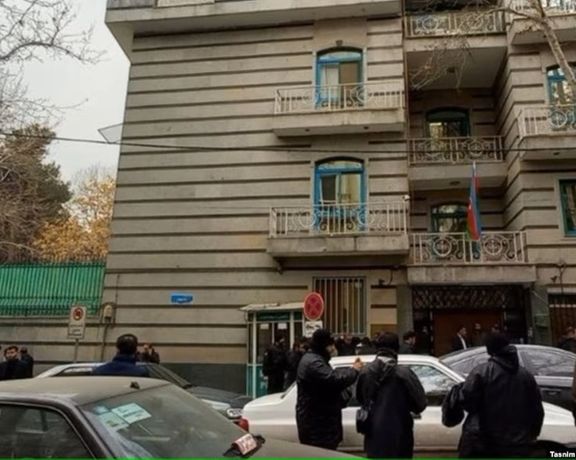
“Twenty local agents” of Iran’s Ministry of Intelligence have been arrested in Azerbaijan according to local media.
The suspects were spreading superstitions to undermine the Baku government under the guise of religious activities, Azerbaijani Ministry of Interior sources told the APA news agency.
The alleged agents are also accused of promoting drug trafficking.
This is the latest in a series of arrests in Azerbaijan of groups affiliated with Iran's Intelligence Ministry in recent weeks.
Relations between Azerbaijan and Iran have been strained in recent months after Baku announced plans to open formal diplomatic ties with Israel.
Azerbaijan closed its embassy in Tehran after an armed attack on it in January.
Earlier this month Azerbaijan expelled four Iranian diplomats over what it called “provocative actions”, possibly referring to several military exercises carried out by Iran's armed forces on the border over the past year.
Tehran accuses Baku of harboring Israeli intelligence and military elements that plan to use its territory in a possible attack against Iran’s nuclear installations.
Around a quarter of Iran’s population is Azari, with analysts and activists disagreeing over the closeness of their cultural and linguistic links to their neighbors to the north.

US prosecutors Tuesday charged a businessman with evading US sanctions imposed on him for financing the Lebanese Hezbollah through illegal dealings.
Nazem Said Ahmad was designated in December 2019 for “blood diamonds” and art trade benefitting Hezbollah and is now charged with continuing his activities and violating the sanctions on him. The sanctions were intended to cut off access for Ahmad and 11 businesses associated with him to the US financial system.
The US Treasury Department also unveiled sanctions on what it said was a vast international money laundering and sanctions evasion network, targeting 52 people and entities in Hong Kong, the United Arab Emirates and elsewhere over the payment and shipment of cash, diamonds, precious gems, art and luxury goods for the benefit of Ahmad.
US sanctions and designations against Iranian entities and individuals, as well as Hezbollah affiliated elements, has picked up speed since mid-2022.
Federal prosecutors in Brooklyn said Ahmad worked with three family members and five other associates to continue dealing in diamonds and artwork, while concealing Ahmad's involvement. One of the alleged co-conspirators, Sundar Nagarajan, was arrested on Tuesday in England. He is reported to be Ahmad’s accountant.
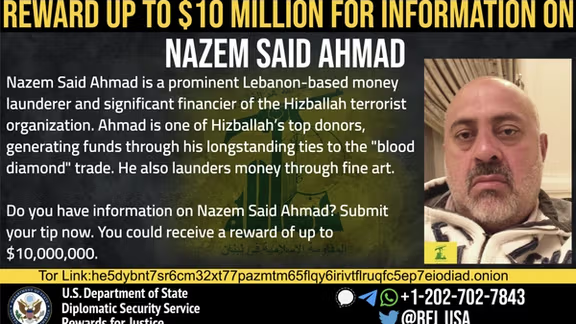
British police said Nagarajan's arrest was related to suspected terrorist financing and money laundering, which is believed to be connected to Ahmad, adding that extradition proceedings had begun. Ahmad himself remains at large.
“The individuals involved in this network used shell companies and fraudulent schemes to disguise Nazem Said Ahmad’s role in financial transactions,” said Under Secretary of the Treasury for Terrorism and Financial Intelligence Brian E. Nelson.
The investigation "speaks to the unwavering commitment of the US and UK governments to prevent art and diamond markets from becoming a haven of illicit financial activity," said Tae Johnson, acting director of US Immigration and Customs Enforcement, whose investigative arm probes sanctions violations.
Prosecutors said Ahmad in 2021 directly negotiated the sale of artwork with a New York-based artist, whom he instructed not to mention his name. Six paintings by the artist valued at nearly $200,000 were then exported to a Lebanese company used by Ahmad, prosecutors said.
In total, entities tied to Ahmad engaged in more than $440 million in financial transactions in violation of sanctions, including importing $207 million worth of goods to the United States and exporting $234 million worth of mostly diamonds and artwork, prosecutors said.
The Treasury's action imposed sanctions on dozens of people and entities in Lebanon, the United Arab Emirates, South Africa, Angola, Cote d’Ivoire, the Democratic Republic of the Congo, Belgium, the United Kingdom and Hong Kong, and warned that Ahmad directs a global network that takes advantage of the permissive nature of the global diamond, precious gems and art market.
Earlier on Tuesday, Britain also sanctioned Ahmad over suspicions he was financing Hezbollah, which is backed by Iran. The British government said Ahmad has an extensive art collection in the UK and does business with several UK-based artists, galleries and auction houses.
With reporting by Reuters
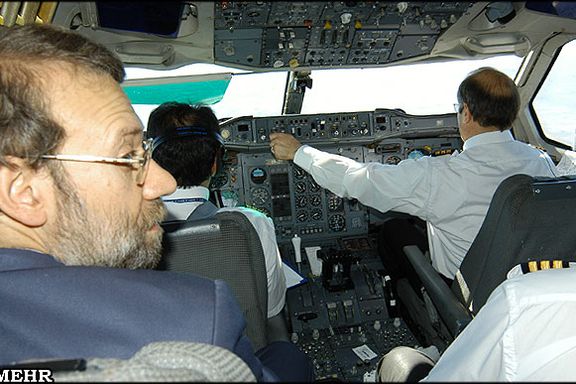
Official claims that an Iran-made passenger jet will soon be ready have been ridiculed by suggesting the government should fly on its maiden flight.
In an article about the prospect of the Islamic Republic’s plan to restart manufacturing Iran-140 aircraft, Faraz internet daily proposed that government officials should be onboard during its first flights, amid serious safety fears.
Mohammad-Bagher Ghalibaf (Qalibaf), the current speaker of the parliament and a qualified pilot who was commander of the Revolutionary Guards' Air Force from 1997 to 2000, was suggested as “the best candidate” to be at the controls.
Faraz also said that the aircraft should be used by President Ebrahim Raisi and his cabinet for their trips across Iran, challenging state officials who brag about the quality of domestic productions to prove that they believe in what they say.
“Since the government and other institutions always stress the need to support domestic production and replace foreign products with the home-made ones, using the domestically made aircraft by cabinet or parliament members in trips and missions is the best practical manifestation of the slogan of supporting national production,” wrote the daily.
Faraz’s article follows claims by head of Iran’s Civil Aviation Organization Mohammad Mohammadi-Bakhsh that the domestically made passenger plane has passed the final tests and is approved to fly in the near future. According to an article in Iran newspaper, he said that the new passenger planes “have 70 to 150 seats, and as reported by the Ministry of Defense, the construction of the first plane has made good progress and has passed various tests and is ready to fly."
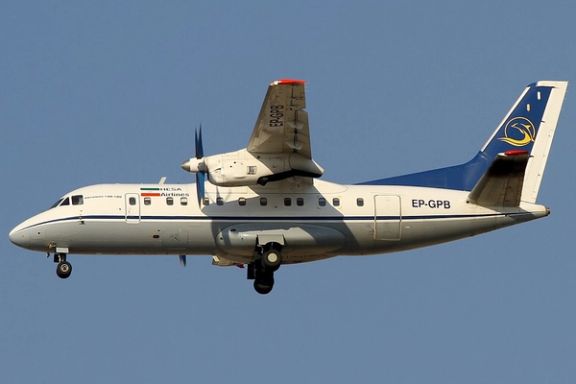
President Raisi called for a new drive to build passenger planes on a visit to the Iran Aircraft Manufacturing Industrial Company (Hesa) in the city of Esfahan (Isfahan) on June 16, 2022. He ordered the company to design and manufacture passenger planes with at least 72 seats “in the near future”.
In February, Mohammadi-Bakhsh announced that the Ministry of Defense is in charge of producing the plane and the Civil Aviation Organization -- Hesa’s parent company -- is monitoring the process, adding the first phase of manufacturing the new platform of Iran-140 plane has been completed. “We think the new platform of Iran-140 aircraft will make its maiden flight by the end of this year,” referring to the Iranian year that ended on March 20.
Echoing remarks by Supreme Leader Ali Khamenei, he stressed the need to expand the aviation industry. Only 175 of Iran’s fleet of 330 passenger aircraft are now in use. He said that with 90 airports and a population of about 88 million, the country requires at least 550 aircraft of all sorts and classes.
In the 90s, the Islamic Republic had a licensing deal with Ukraine’s Antonov to build the 52-seat Iran-140, based on Antonov’s AN-140, but the manufacturing program was hit by low production numbers and an appalling safety record. Out of five produced planes, two of them crashed, on February 15, 2009, and August 10, 2014. However, the Islamic Republic authorities insist that the plane is safe.
As talks to restore the 2015 nuclear deal with world powers have hit a deadlock, sanctions prevent the Islamic Republic from buying jets from the likes of Boeing and Airbus.
In February 2021, Iran’s Civil Aviation Organization announced plans for the domestic production of a 100-seater passenger aircraft, but there has been no further news about it since. Earlier this month, Mohammadi-Bakhsh claimed that Russian aircraft are now being repaired in Iran following a deal between the Islamic Republic and Russia to accept each other’s approvals in the field of repair and construction of aircraft.
Iran has suffered from shortages of civilian airliners since the 1990s and used a variety of ways to lease older planes or buy spare parts through intermediaries, but the technical state of its fleet has continued to deteriorate.